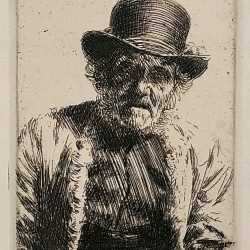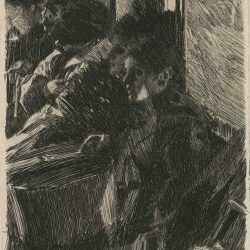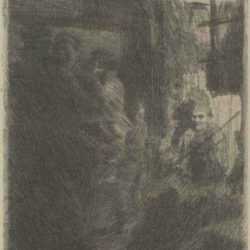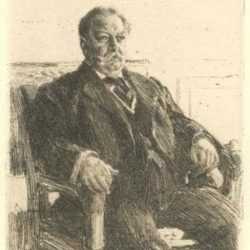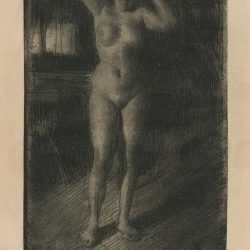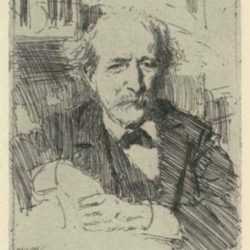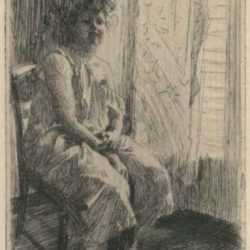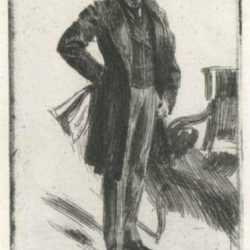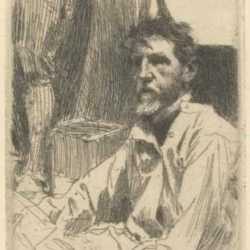Filter by Type
Filter by Category
Filter by Size
Filter by Year
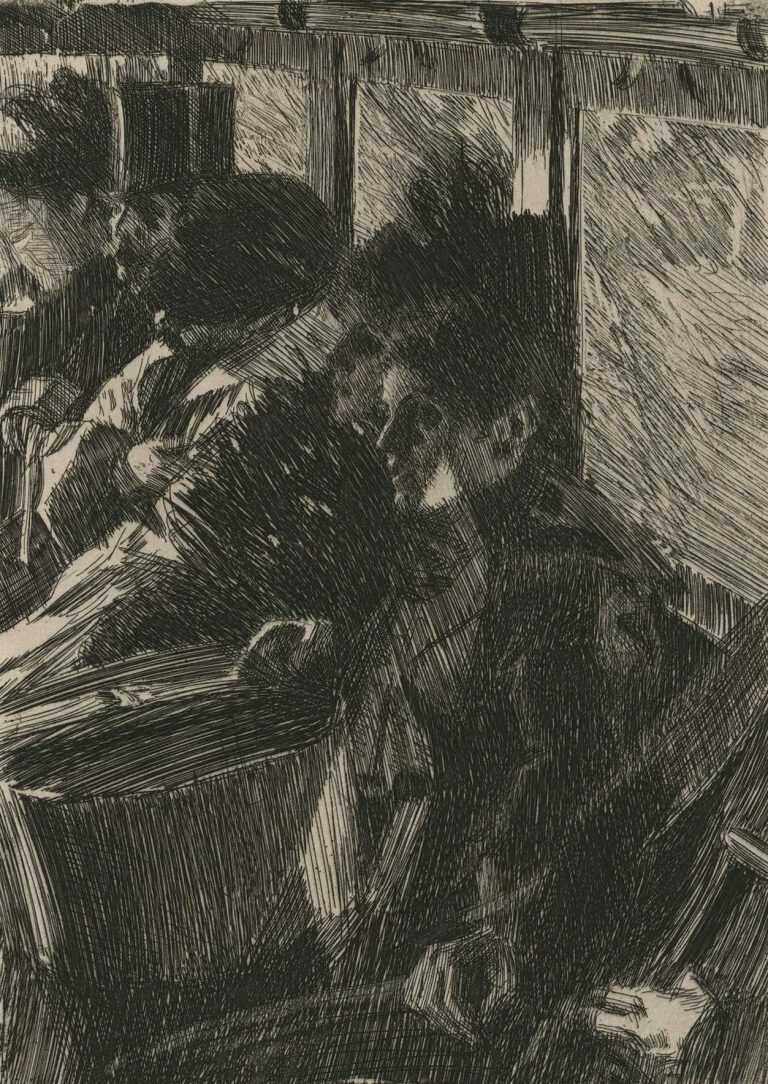
Anders Zorn
Swedish (1860-1920)
Anders Zorn, the celebrated painter and print-maker, rose from humble beginnings to become a celebrated member of the European and American upper classes. Zorn was born out of wedlock to a German brewer and a Swedish peasant woman. He was reared in the rural Swedish province of Dalarna and although he later traveled extensively and took pride in his upper-class status, he never felt at home until he settled again in his native town of Mora in 1896. In 1893, on his first trip to America, Zorn visited New York City en route to the Columbian World Exhibition in Chicago (also known as Chicago’s World Fair). The self-made artist subscribed to American values and immediately felt welcome in America. Zorn wrote about America in his memoirs:“I get on well in America and with Americans. Their frank, straightforward manner suits my nature. I’ve never really been able to stand our urban Europeans’ ceremonious style and artificial customs. When I first came out of Dalarna, I quickly learned that everything I knew and valued was considered nothing, and that one should never tell the truth about things in polite society. . . . But the only rules of conduct that were so severely impressed on me by my grandfather from my earliest childhood were not so tricky; faithfulness, being true to one’s word, honesty, and punctuality, virtues I discovered were unnecessary in the cities of Europe. . . . Why was I more than other foreigners during [my first visit to America] closest to the elite of America and introduced in all the clubs? Everywhere I go, I ascribe this to my grandfather, the splendid old Mora peasant who raised me until I was twelve. . . . Over there [in America], when they say "He’s all-right," all doors open to the foreigner, which Europeans cannot understand. Openness, honesty, straightforwardness, punctuality, these things are included in the testimonial ‘He’s all-right.’”
While at the Chicago World’s Fair, Zorn established lasting relationships with many friends and patrons, including Charles Deering, Mrs. Potter Palmer, and Isabella Stewart Gardner. According to a popular story recounted in Carrell Shaw’s essay in Anders Zorn Rediscovered, Mrs. Gardner, captivated by Zorn’s painting Interior of an Omnibus in Paris, turned to a man nearby and asked if it was for sale or if he knew of the artist. That man was Anders Zorn and Mrs. Gardner replied, “Yourself, indeed! Well, I feel sure we shall soon be enemies . .. or else very, very fast friends. You shall come today for tea.” This chance meeting initiated a long friendship and patron relationship. In addition to the Omnibus oil painting, Zorn’s outstanding portrait of Mrs. Gardner at the Palazzo Barbaro in Venice, and an impressive collection of Zorn prints are currently on view at The Gardner Museum in Boston. In November of 1893, the Frederick Keppel Gallery on East 16th Street in New York City held the first American exhibition of Zorn’s work and ignited Zorn’s popularity in this country. As evidence of his influence in America, Zorn portrayed three Presidents: Theodore Roosevelt, Grover Cleveland and William Taft.
Not only did Zorn love America, but also America loved him, and continues to do so. The artist was one of the most actively collected printmakers of the early 20th Century, fetching extremely high prices at auction and was often ranked among the world’s most highly-esteemed printmakers. In 1920, a Zorn print from a well-known New York collection brought $3,900, compared to a premium Rembrandt at the same sale that sold for $3,100. In 1928, the Boston Herald published an article highlighting the Museum of Fine Arts, Boston’s acquisition of a collection of 110 Zorn etchings. However, by the 1950s the artist’s prints were largely neglected. With the help of Childs Gallery, the demand for Zorn’s prints has increased steadily since that time. In the early 1970s, the Gallery acquired the Therese Lownes Noble collection of prints and the Frederick Shaeffer collection of prints, each of which had substantial holdings in Zorn. This allowed the gallery to maintain and to continue to acquire a substantial inventory of the artist’s work and in 1974 Childs devoted its first print letter to the artist. The Gallery’s commitment to Zorn was demonstrated by the 1980 exhibition, “Anders Zorn 1860-1921: An Exhibition of 75 Prints” and another show in 1984. The President of Childs Gallery, D. Roger Howlett, encouraged Elizabeth Broun in her groundbreaking 1979 Zorn exhibition at the Spencer Museum at the University of Kansas. That exhibition and the extensive catalogue that accompanied it, rekindled interest in Zorn and was followed in 1993 by “Swedish Impressionism’s Boston Champion: Anders Zorn and Isabella Stewart Gardner” at the Gardner Museum and a Fogg Museum at Harvard University’s exhibition.
Childs Gallery continues its strong interest in offering the best of the etchings of Anders Zorn.

